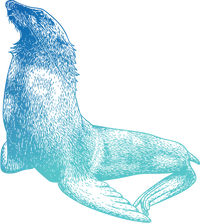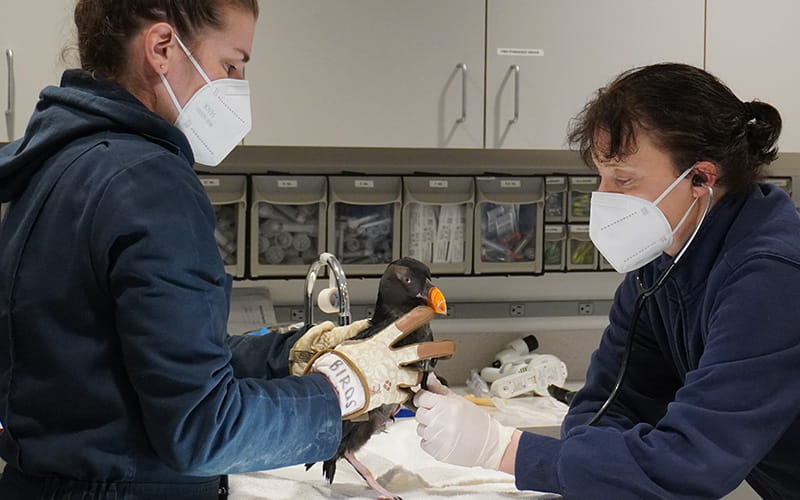
Veterinary Care Center
The veterinary care center is where animals that live at the Seattle Aquarium, from oystercatchers to otters, come to receive medical care (much like taking your pet to the vet). The care is provided by our team of experienced veterinary professionals—including a board-certified specialist in zoological medicine—as well as our dedicated animal care staff and outside specialists. Together, they work to provide the best care possible for all animals, from sea stars to sturgeon.
See below to learn about some of the equipment inside the veterinary care center, arranged from left to right. Please note: equipment may be moved to other locations within the veterinary care center or Aquarium, so it may not be visible through the window.
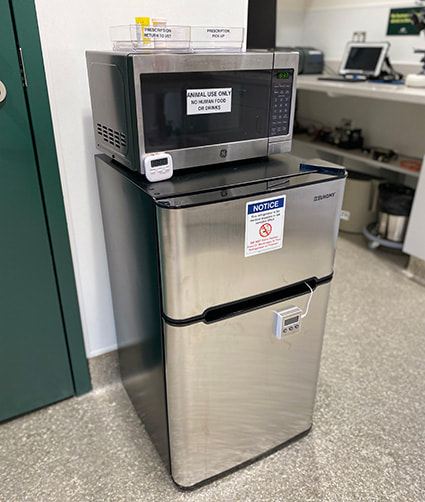
MICROWAVE, FREEZER AND REFRIGERATOR:
No leftover pizza or ice cream bars here! These pieces of equipment are designated for animals only. The microwave is used for warming up animal food, heat packs and liquids. The refrigerator and freezer are used to hold medications that require cold temperatures, as well as animal foods.
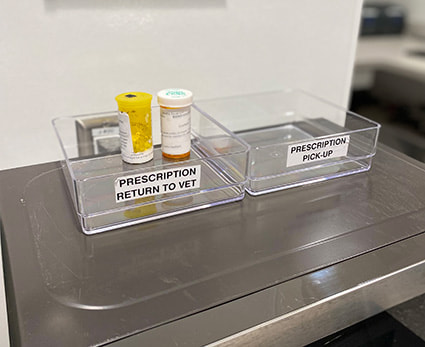
PRESCRIPTION PICKUP/RETURN:
Our veterinary care center also functions as a pharmacy. When our veterinary staff prescribe medication for an animal, a member of that animal’s care team comes to the veterinary care center to pick it up. After the course is finished, any unused medication is returned. You may already know that it’s important for humans to dispose of unused medications safely—and the same is true for animal medications. Most large pharmacies offer that service to people and their pets.
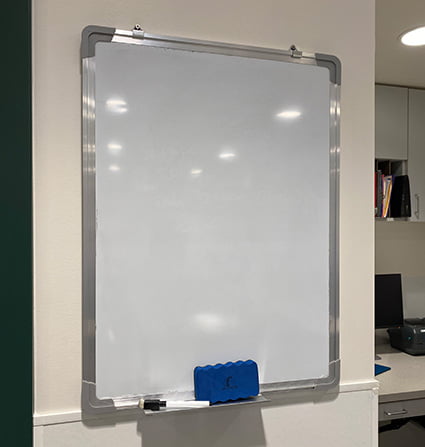
WHITEBOARD:
For each animal procedure, our veterinary staff want to get all the steps completed efficiently so the exam can be short and smooth. They use the whiteboard to make checklists that help keep track of what needs to be done.

COMPUTER STATION:
At the Aquarium, all of our animal data is kept in a dedicated medical record system called Tracks. Every animal under our care is in the database, even the corals and abalone! The computer station allows staff to access all the data for an animal. Staff also use the computer to review ultrasound and x-ray images.
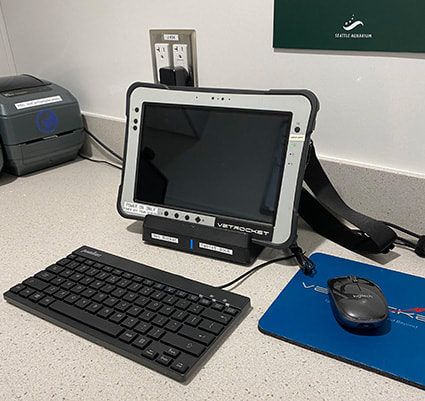
X-RAY TABLET:
This tablet is part of the wireless portable equipment that allows us to do x-rays in the veterinary care center, or inside/beside the animal habitats. The tablet works with the x-ray plate and shows images within seconds of the images being taken. (See the x-ray machine description for more details.)
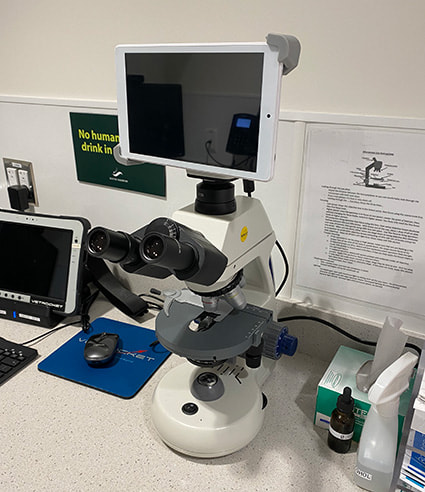
MICROSCOPE:
The microscope is used to examine samples on slides. Samples can include skin scrapings (where our staff look for parasites) or blood smears (to look at cells). The small screen shows the view through the eyepiece—this helps with training and also allows our staff to share what they’re looking at.
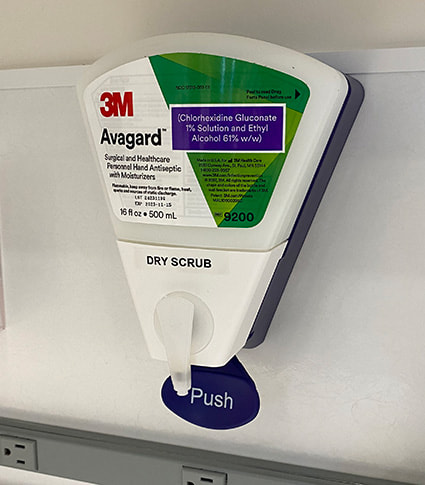
DRY SCRUB:
Our staff use this antiseptic hand-cleaning solution when they need to do a sterile hand scrub for a procedure. It’s called “dry scrub” because no water is required. Dry scrub is used in veterinary and human hospitals and replaces the older way of sterilizing, which involved scrubbing hands under a running faucet.

WET TABLE:
This is our primary exam table for animals. It’s plumbed in, meaning it has running water and a drain, so our staff have easy access to flush solution and can drain away water or other liquids that aren’t needed.
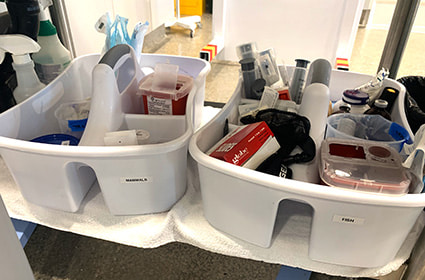
TOTES:
These totes are all set up to for specific work that our staff does frequently—such as training mammals to give blood voluntarily, or providing treatment to a particular fish or bird.
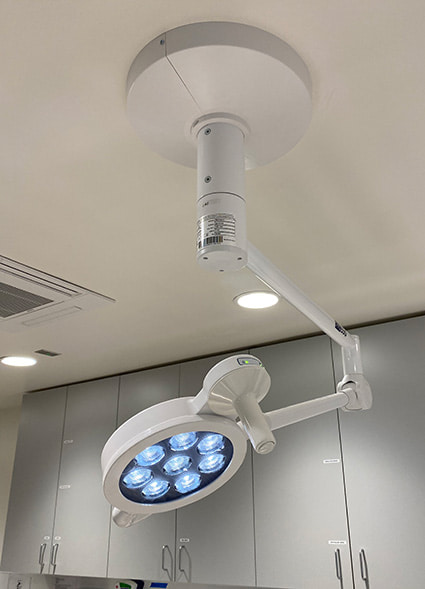
TREATMENT LIGHT:
You may have seen a light like this at your dentist’s office—similar lights are also used in operating rooms. It provides a strong beam of light that our staff can point at an area of interest, such as an animal’s mouth during dental work.
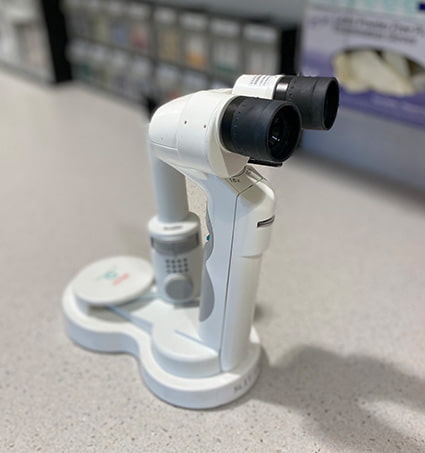
SLIT LAMP:
This is actually a handheld microscope that allows the veterinarian to get a closer look at an animal’s eyes, as well as other parts of the body.

HOSES:
These hoses allow our staff to quickly fill large containers with freshwater or saltwater, and provide it as needed to the animals.
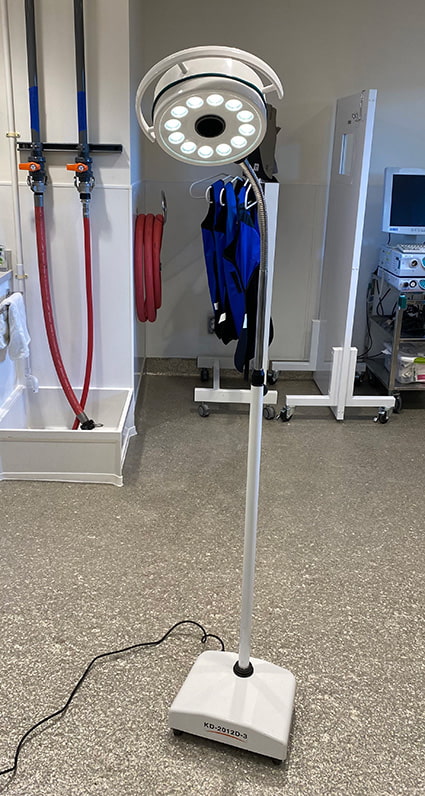
STANDING LIGHT:
This portable light can be moved around the veterinary care center, and even around the Aquarium as needed, to provide better illumination for a procedure.
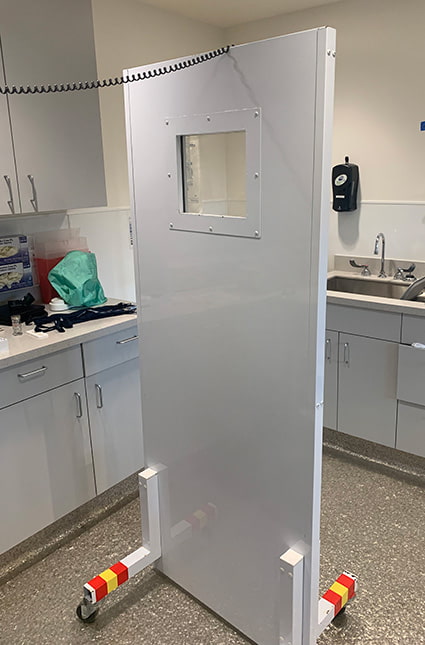
LEAD SHIELD:
This shield helps protect staff who need to be close to the x-ray unit and animal. It’s a mobile version of what humans see when getting x-rays done and the technician stands behind a wall.
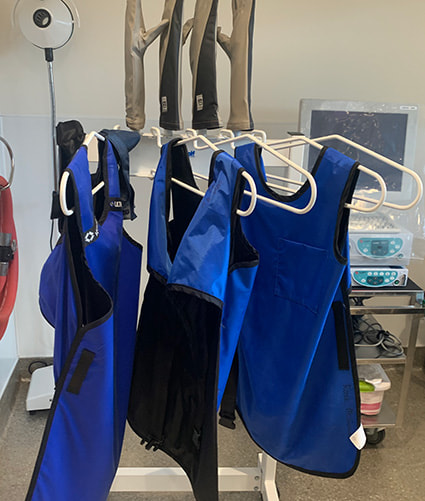
GOWNS AND GOWN HOLDER:
These gowns are lead (or lead equivalent) and protect staff who need to be close to the x-ray unit and animal. When a gown is called for, each staff person also wears a specialized badge to monitor and detect any x-ray exposure. Badges are checked twice a year to ensure everyone is staying safe.
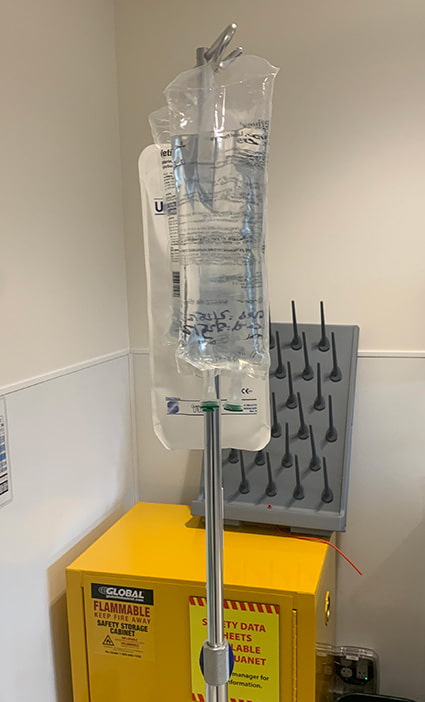
IV FLUID POLE:
This is the same type of pole used in human hospitals and it serves the same purpose: holding bags of sterile fluids to make it easier to administer them.
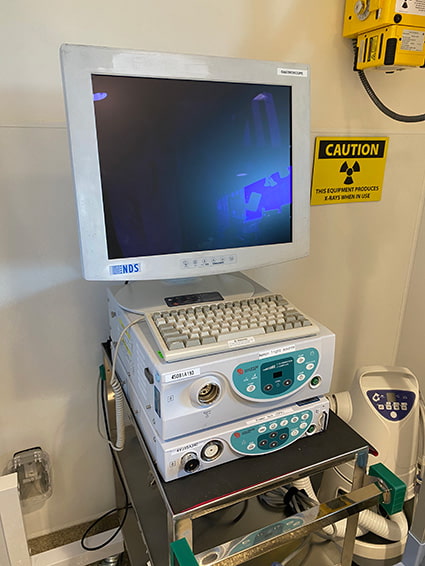
ENDOSCOPY UNIT:
This endoscopy unit, donated by Park’s Medical, allows our staff to use a fiber-optic camera system at the end of a flexible tube to look into an animal’s mouth, gills cavity or gastrointestinal tract. The magnified image is visible on the screen.
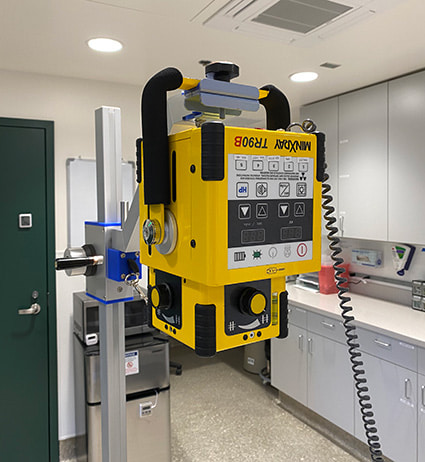
X-RAY MACHINE:
This wireless machine allows our staff to do x-rays in the veterinary care center or inside/beside the animal habitats. The yellow box is the x-ray generator, which allows us to take radiographs, which are “seen” by a plate and sent to the x-ray tablet. The machine must stay dry and salt-free, which can be challenging in an aquarium setting! (See the x-ray tablet description for more details.)
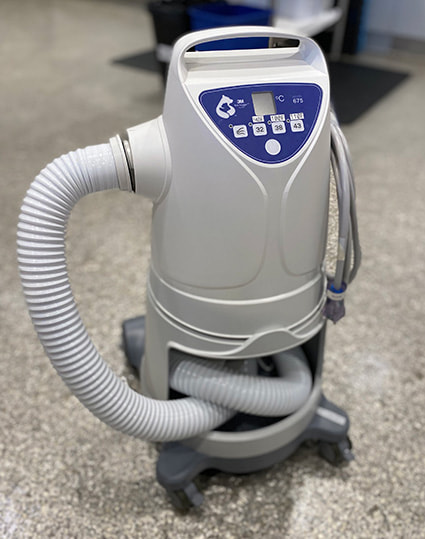
CONVECTIVE TEMPERATURE MANAGEMENT SYSTEM:
Also called a Bair Hugger, this system pushes warm air out at different temperatures to keep animals from getting cold during a procedure. Our staff use it mostly when a mammal or bird is in surgery or under intensive care.
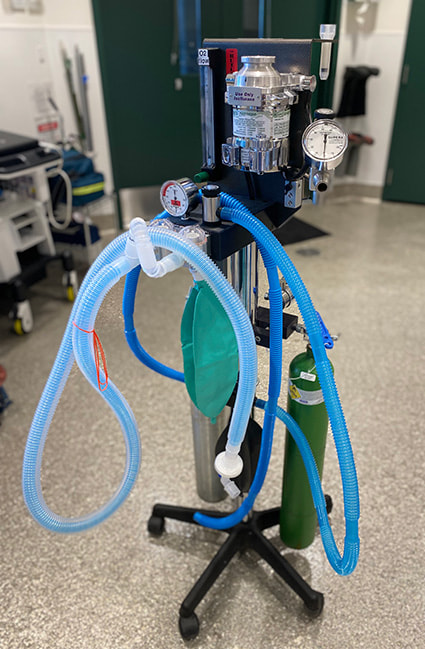
GAS ANESTHESIA MACHINE:
This machine, which is mobile so it can be moved to wherever it’s needed, provides anesthetic gas and oxygen when an animal is under anesthesia. Our staff use it for mammals, birds and reptiles. The machine is unusual because it has two different circuits and a very wide range of gas flow rates—which means our staff can use it for the smallest birds (like a snowy plover) and biggest mammals (like a northern fur seal).

IV CATHETER CART:
Just like in human medicine, animals at the Aquarium may have intravenous (IV, or in a vein) or intraosseus (in a bone) catheters placed for surgical procedures or in case of an emergency, ensuring the animals get the hydration they need. Our staff use different locations in different species: in sea otters, they use the jugular vein; in birds, they might place a catheter in a wing vein or into a bone in the wing.
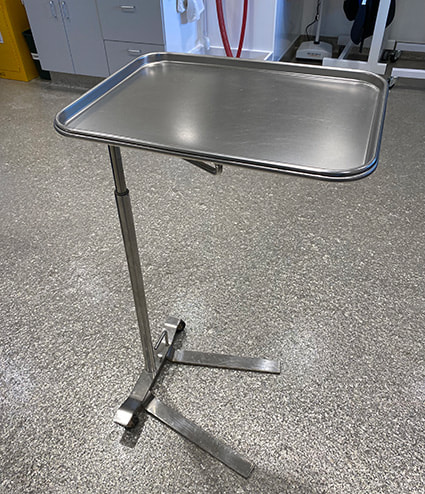
MAYO STANDS:
These handy little tables can be rolled around as needed during a procedure. They may be used to hold surgical instruments or other supplies. You’ll see the same tables at your dentist or in an operating room for humans.
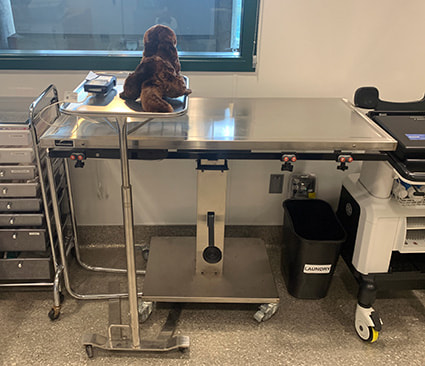
SURGICAL TABLE:
This table can be used to extend the wet table for larger animals. You’ll see the same type of table at your pet’s vet clinic.
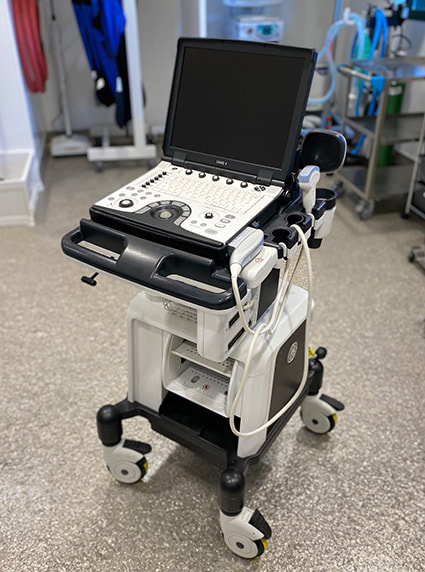
ULTRASOUND UNIT:
The ultrasound machine uses high frequency sound waves to produce an image of the inside of the body. It can be used on almost all the animals at the Aquarium. Because the probe can “see” through water, it can be used to scan the inside of an octopus without ever touching the animal!
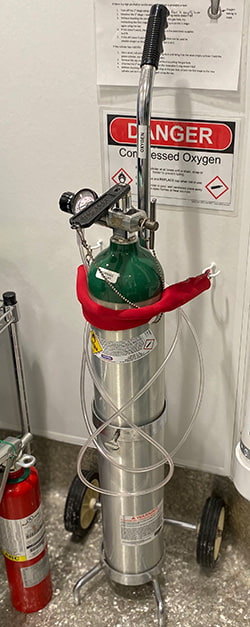
PORTABLE OXYGEN:
This portable oxygen tank is the same equipment that is used for humans and allows our staff to bring oxygen to an animal during an emergency. A variety of face masks and tubes allow our staff to use the portable oxygen with any bird or mammal.
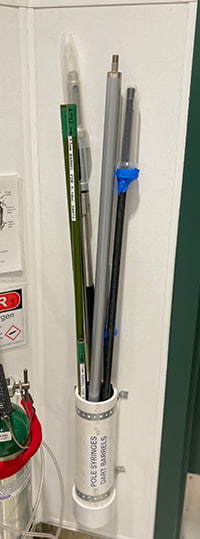
POLE SYRINGES:
Our staff try to do all veterinary care of mammals under positive reinforcement training—which means working with the animals cooperatively, and without any restraint, for injections, ultrasounds and x-rays. However, during an emergency, an animal may be unlikely to respond to training cues. These long syringes and soft darts are available in case our staff have to use them. The most important thing about this equipment is that it keeps humans and other animals safe.
